Diagnosed finally at 33 – Keith’s now in remission
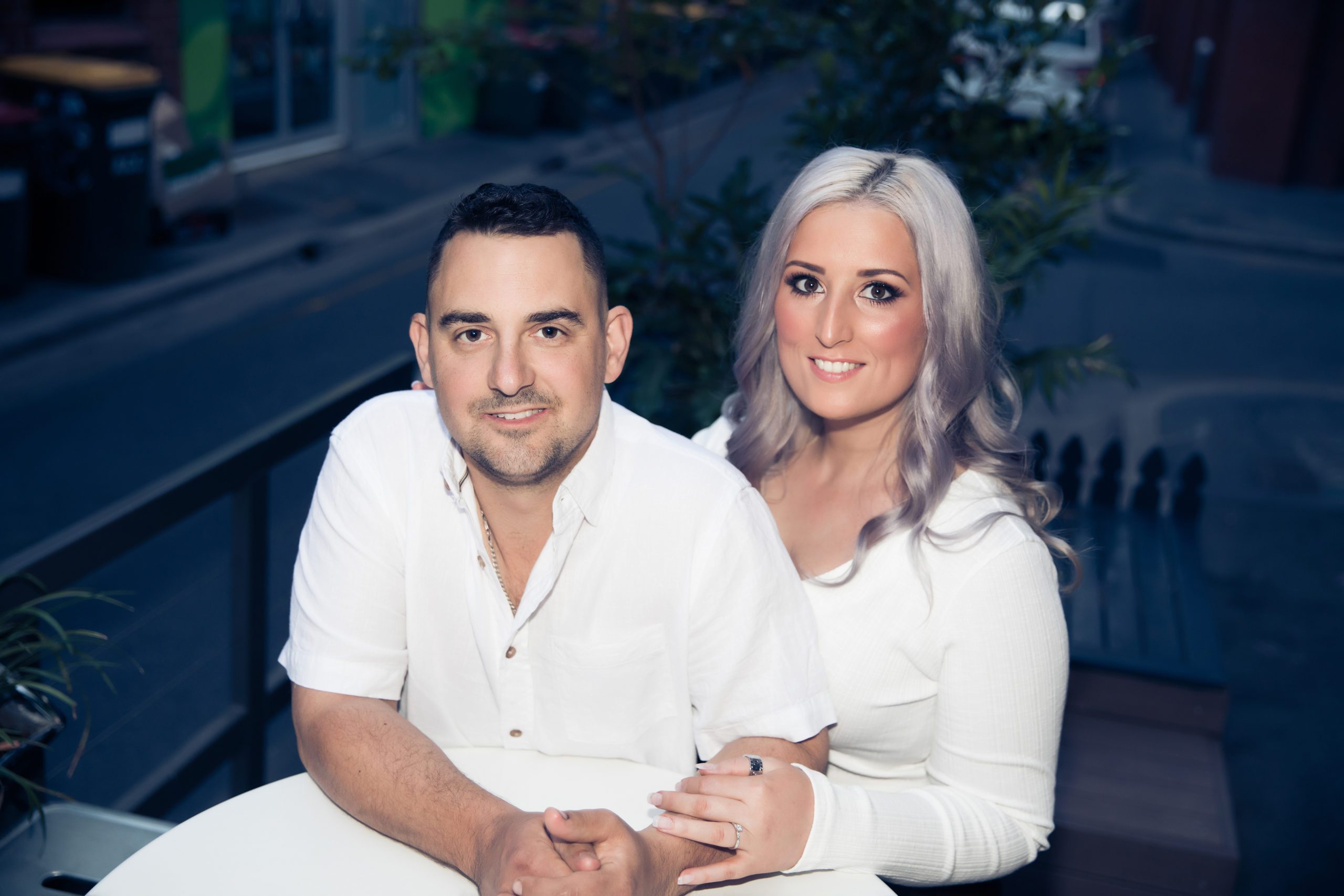
Keith Moore was “ridiculously young” to be told he had AL amyloidosis and it took nine months before he finally got that diagnosis.
He’d just turned 33 and had begun an adult apprenticeship as a mechanical engineer after 14 years as a butcher.
“It was a totally different field; in something I love. It was fantastic,” said Keith, a professional speedway racing car driver.
But six weeks into that new job, Keith started getting ill. At first, he couldn’t get on top of a series of colds and flus. Then he got a painful burning sensation on the skin of his feet and chest, which felt on fire.
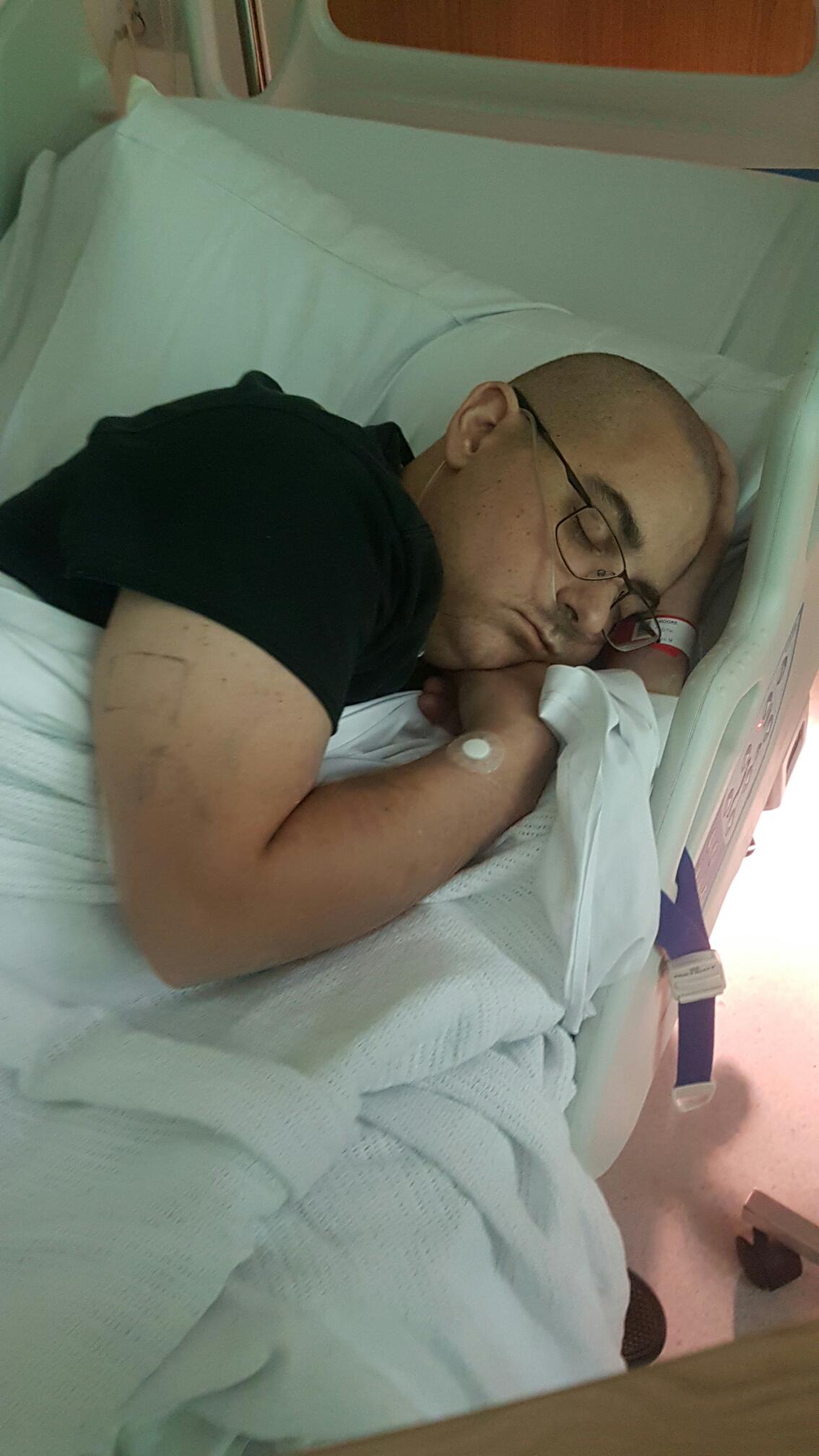
“I wasn’t sure what was going on, so we went to the doctor,” said Keith, now 36, of Murray Bridge, an hour north of Adelaide. His partner at the time, Felicity Czech who is now his fiancé, went along with him.
“My resting heart rate was abnormally high, about 90-95 beats per minute. That was a bit strange.
The doctor put Keith on an ECG machine and when this showed an abnormality, he was referred to a cardiologist.
Over the next nine months, Keith saw the cardiologist every four to six weeks and he also “bounced around between GPs, because they all seemed to think there was nothing wrong with me”.
“We were beyond frustrated as no one seemed to want to listen,” said Keith.
“It felt like I was being treated like a drug addict wanting drugs.”
“My heart rate was quite fast, my blood pressure was low, but the rhythm was fantastic, and I didn’t have a temperature.”
Keith developed other symptoms too, excruciatingly painful feet which meant, after working all week, he’d spend all weekend on the couch. He had a tingling feeling in his feet too and had trouble “going to the toilet”.
“I was sweating at night profusely,” said Keith and this meant getting up to change the sheets and his clothes during the night.
“I couldn’t sleep, then during the day I would sit down and fall asleep instantly for a bit, and numerous times I almost fell asleep driving the car home.”
He often got bloodshot eyes, vomited every day and night, was short of breath, and had shooting pains through his body, “like somebody just put a knife into me”. And he couldn’t drink alcohol.
But the biggest concern for Keith, an extremely fit, well-built guy who described himself as “80kg of pure muscle”, was the weight he lost over three months–20kg.
“I was nothing but skin and bone.
“I knew in the back of my mind there was something seriously wrong with me, but I’ve always been the sort of person that never got sick. I suppose I was in a lot of denial.
“I was sure they’d find out what was wrong, and I’d be right in a couple of weeks.
“It was a very strange and scary time.”
More than a decade earlier, when Keith was 21, he’d been diagnosed and treated for Wolff-Parkinson-White* syndrome.
“It’s quite a common thing. I’d had a heart ablation for that and was fine. Still to this day, I don’t have a problem with it at all.”
His cardiologist couldn’t work out what was wrong with Keith, so he referred him to another cardiologist. Keith had another “heap of tests” including an MRI scan of his heart. This picked up “some sort of infection” in his heart and he had a heart biopsy.
“We went in for the results six weeks later, and he said, ‘oh, you’ve got amyloidosis’.
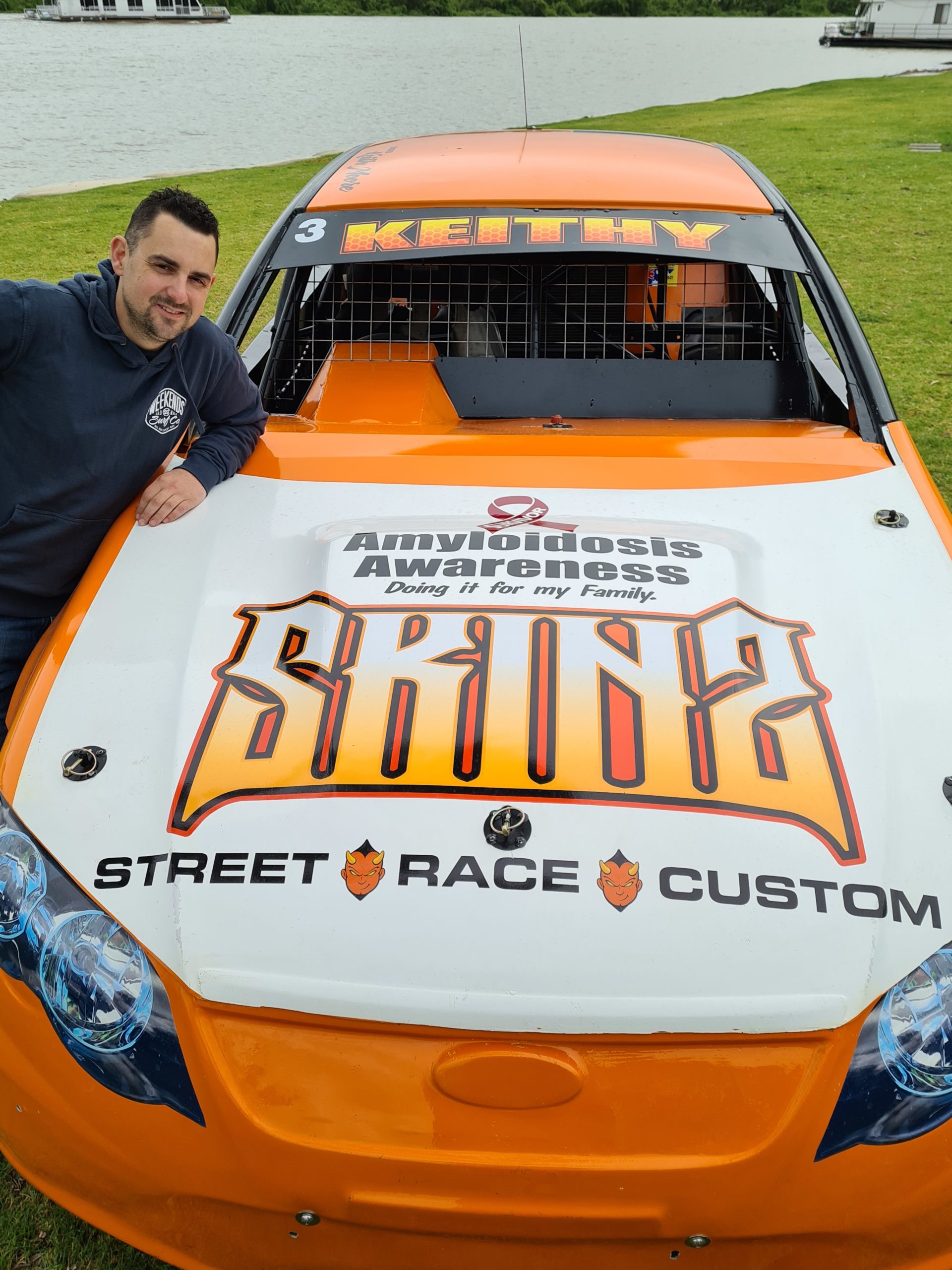
“We had no idea what that was, and he didn’t explain it to us very well. He pretty much just said, ‘we can fix it with chemo, but I’m going on holiday, so I’ll see you in six weeks’.
“In my current state, I would not have lasted another six weeks,” said Keith.
He and Felicity said they “did a bit of Dr Google reading, which you really shouldn’t do”.
“What we read at that time was, ‘you have about 12 months to live’.
“That shot us down a fair bit, so we quickly made a GP appointment to double check our findings and we could tell by his face that this was not good, and he said we should talk to our families and make a plan.
“I had to tell my young children that Dad was going to go in about a year. It was horrible,” explained Keith who has three children, now aged 17, 13, and 11.
Scrambling, and feeling like everyone had already given up on him, Keith jumped on Facebook seeking help. He found a support group and immediately posted, “this is what I’ve got. I’m quite scared. I don’t know what to do”.
“A lady rang me. She gave me a bit of a back story on amyloidosis. Her husband had passed away 10 years prior.
“She said, ‘get on to this guy, Simon Gibbs, he’s Australia’s leading expert’.
“I emailed Simon the next day and said, ‘please help. I’m 33. This is what I’ve got’. It was a Thursday. He rang me straight away and said, ‘can you come to Melbourne on Monday?’.
“I said, ‘yep, we’ll be there’, so my father and my partner booked tickets and we were off on the plane to Melbourne on Sunday, and on Monday, Simon took one look at me and stuck me in hospital to start chemo the next day.”
“We thought this would be a 24 hour round trip!”
At the time, Keith didn’t realise how close he was to dying.
“I didn’t want to have chemo and when we asked about other treatments available, Simon’s reply was, ‘I don’t think anyone wants to have chemo’.
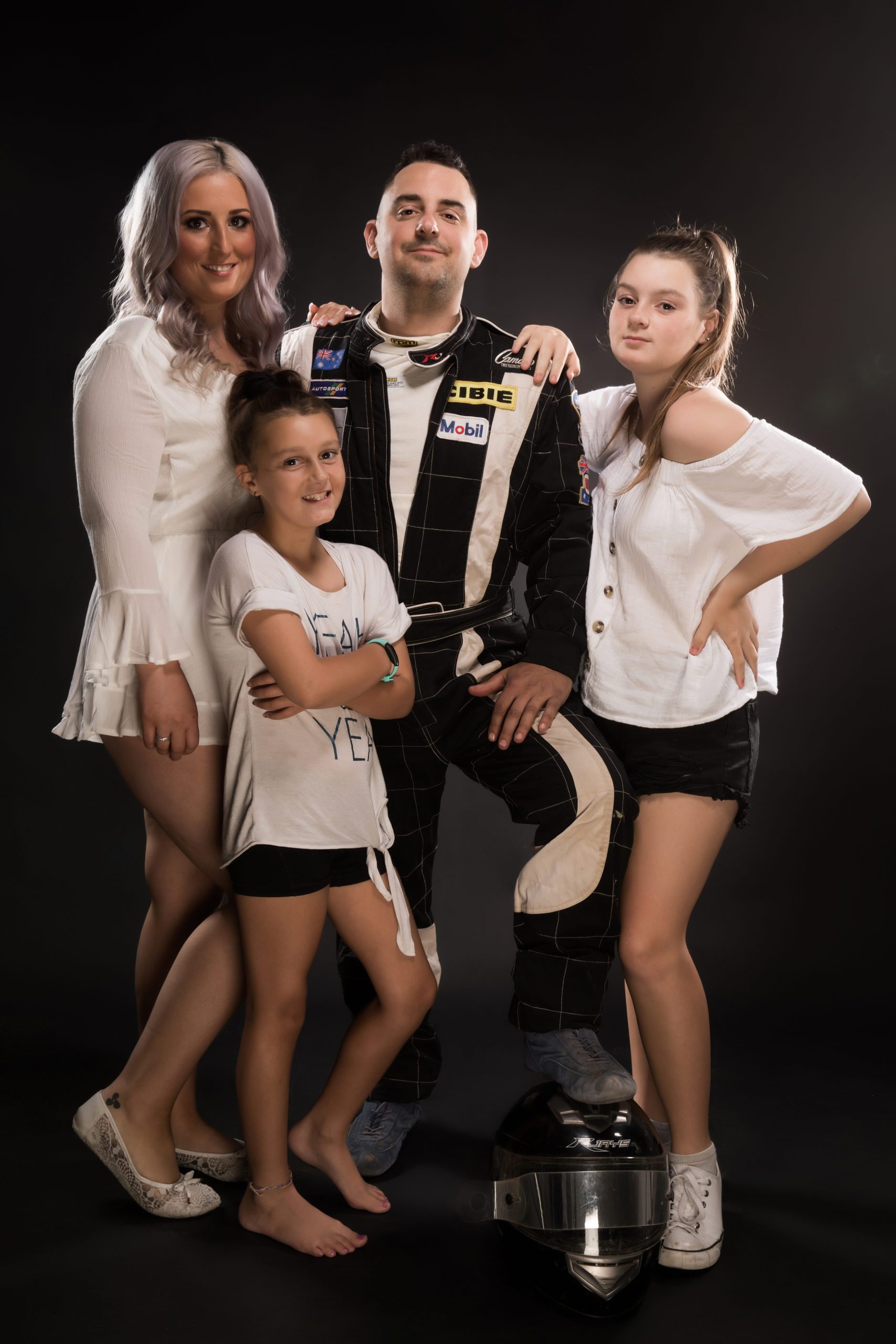
“He pretty much said, ‘if I don’t give you chemo, you won’t last two weeks’; that’s how frail I was.”
“Simon told me amyloidosis had come a long way in 10 years. It had been a death sentence, but today more people are surviving with new treatments, and CAR T-cell therapy is coming which is meant to be the new greatest thing.
“Amyloidosis is quite rare. Most people who have it are 60, 70, 80 years old, so to find it in somebody 33 years old is just ridiculous.”
“I believe I’m Simon’s [Dr Simon Gibbs] youngest patient he’s ever had.
“We have a very good relationship, Simon and me. I said to him, ‘look, no bulls..t. Don’t sugar coat it, tell me how it is. I need to know what’s happening. If you do that, I’ll guarantee I’ll get through it’,” said Keith.
In Melbourne, Keith started chemotherapy and arrangements were made for him to see a local haematologist back in South Australia, and a week later, he flew home and continued the medication Dr Gibbs had given him.
“I finally got to see the haematologist [in Adelaide] two weeks later and she did the same thing, she took one look at me and stuck me in a hospital. She didn’t think I had a chance of surviving, but Simon’s response to her was – ‘he’s young, he can do this’.”
Keith continued the treatment for six months, then went back to Melbourne to see Dr Gibbs.
“He said, ‘right, another three months-worth of treatment’.
The issues Keith had during his 12 rounds of VCD**, began in the first month when he was rushed to hospital in a lot of pain, having not had a bowel movement for five days, then during the last cycle of chemo, he got a urinary tract infection and a cold.
Keith loves a bit of salt but people with amyloidosis need to limit their salt intake so he paid the price with a lot of fluid retention in his legs and in his chest, which affected his breathing.
“Other than that, I didn’t get sick and stayed completely healthy,” said Keith.
“We got the light chains down as far as we could until the treatment stopped working, then he [Dr Gibbs] said, ‘right, you’re fit, you’re healthy, you’ve put on weight’–I was back to 80kg–‘let’s do it’.
Keith went back to Melbourne to have his stem cells collected in the leadup to having an autologous stem cell transplant.
“While I was in hospital, Simon had a patient who had just had a stem cell transplant come and talk to me. He was fit and healthy and back to work. “He was actually a mechanical engineer like I am, which was fantastic.
“We related to each other a fair bit. He was an older guy, in his 50s, which is still quite young for amyloidosis. We had a great chat and he told me what he went through.
“That was really helpful… to see it can be done. That was a big turning point.
“He was pretty confident I’d be fine, which was the hope we needed.
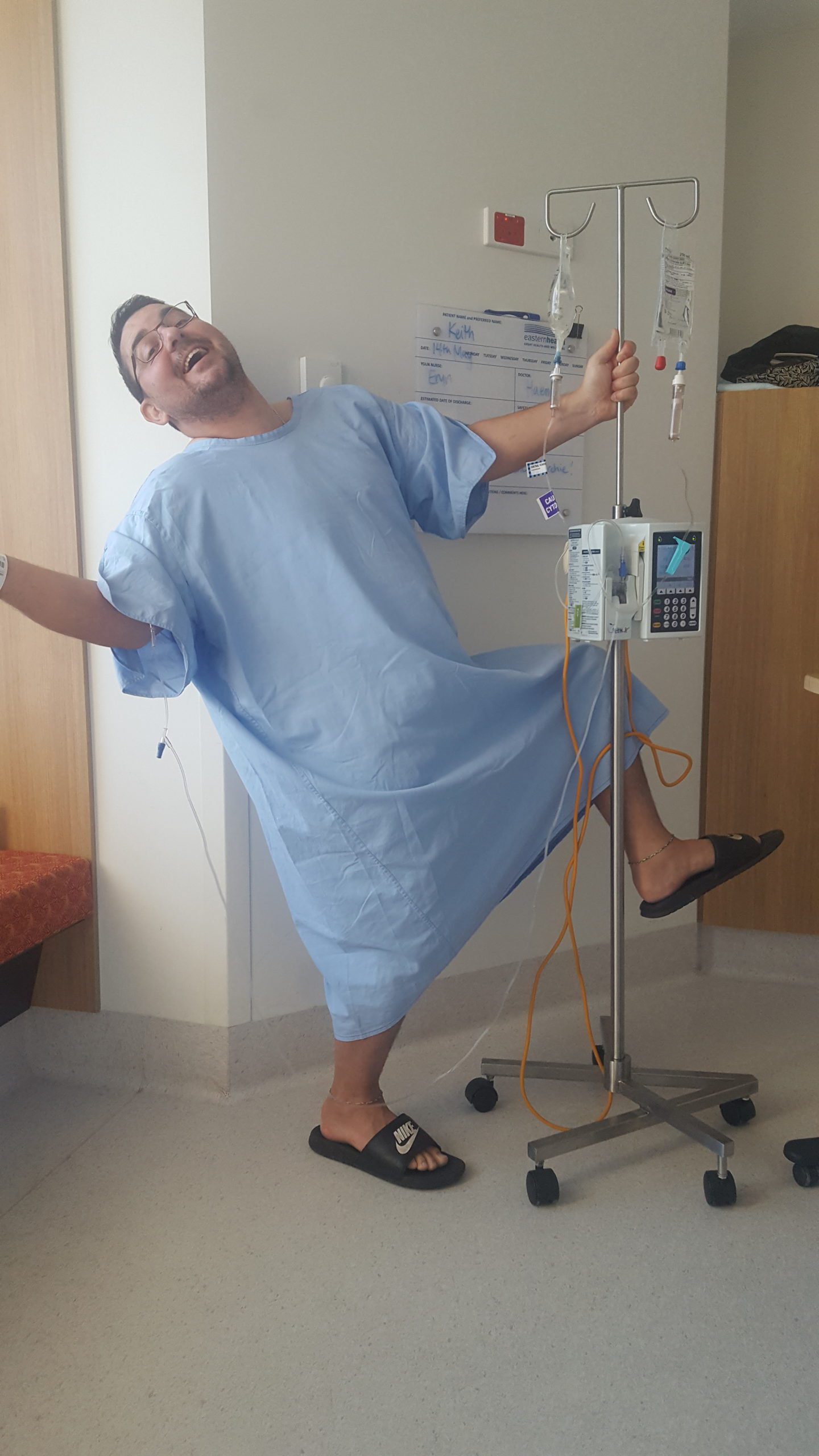
Three weeks later, at the end of May 2019, Keith had his transplant at Box Hill Hospital and a week later Felicity had to return home to the children and work.
During his five weeks in hospital, Keith almost died from an infection that ended up being associated with his PICC line, which was removed.
Then, after spending another week in Melbourne, at a hotel***, “to double check nothing was going to go wrong”, Keith and his dad took two days to drive home.
“I spent another seven weeks recovering at home before I went back to work full-time.”
“My family, the doctors, everyone, all told me off and said I went back to work too early,” said Keith, but he was determined.
“My work was fantastic. When I explained what was happening to me [after Keith’s diagnosis] and that treatment would take 12 months, they organised for my apprenticeship to continue and gave me 12 months off work. My job would be waiting for me when I returned.
“I had almost 12 months off to the day.”
Since returning to work in August 2019, Keith has gone from strength to strength.
During his transplant, Keith had problems keeping his food down, and for nine months he continued to struggle with nausea. But the peripheral neuropathy in his feet, caused by the amyloidosis, has “pretty much gone”, along with his former fatigue, and now he’s “the perfect weight.
“I eat fine. I drink fine. I go to the toilet fine. My heart rate has come down.
“I’m probably 95% back to where I was. I do have a little bit of nerve damage, but not too much. I still get a little bit tired every now and then. I have to make sure I drink water consistently and am constantly hydrated. And my vision was affected. Now I wear glasses all the time.”
Keith’s not on any maintenance medication and his bloods are in the normal range.
“It’s a bit of a miracle to be honest.”
During December 2019 and January 2020, Keith’s light chains started to rise again, and arrangements were put in place for him to have lenalidomide (Revlimid®). This took some time, and when Keith finally got access to the treatment, in April, COVID-19 had struck.
“When I called Simon, he said it was probably not a good idea to take lenalidomide as it would lower my immune system. He decided to do another test on my light chains. If they were high, I would have to take the lenalidomide, but if they were low, we’d hold off and keep an eye on them.”
It turned out, however, that Keith’s light chains had gone down on their own.
“They went back to normal and have been normal ever since,” he said.
“I am currently in remission. We try not to use that word, and Simon even dropped the word ‘cured’ once. He said, ‘we don’t like to say it, but we think you’re cured, but we won’t say that ever again’.”
Keith has a blood test every six to eight weeks “just to make sure”, and everything has been in the normal range for 12 months now, with no maintenance therapy whatsoever.
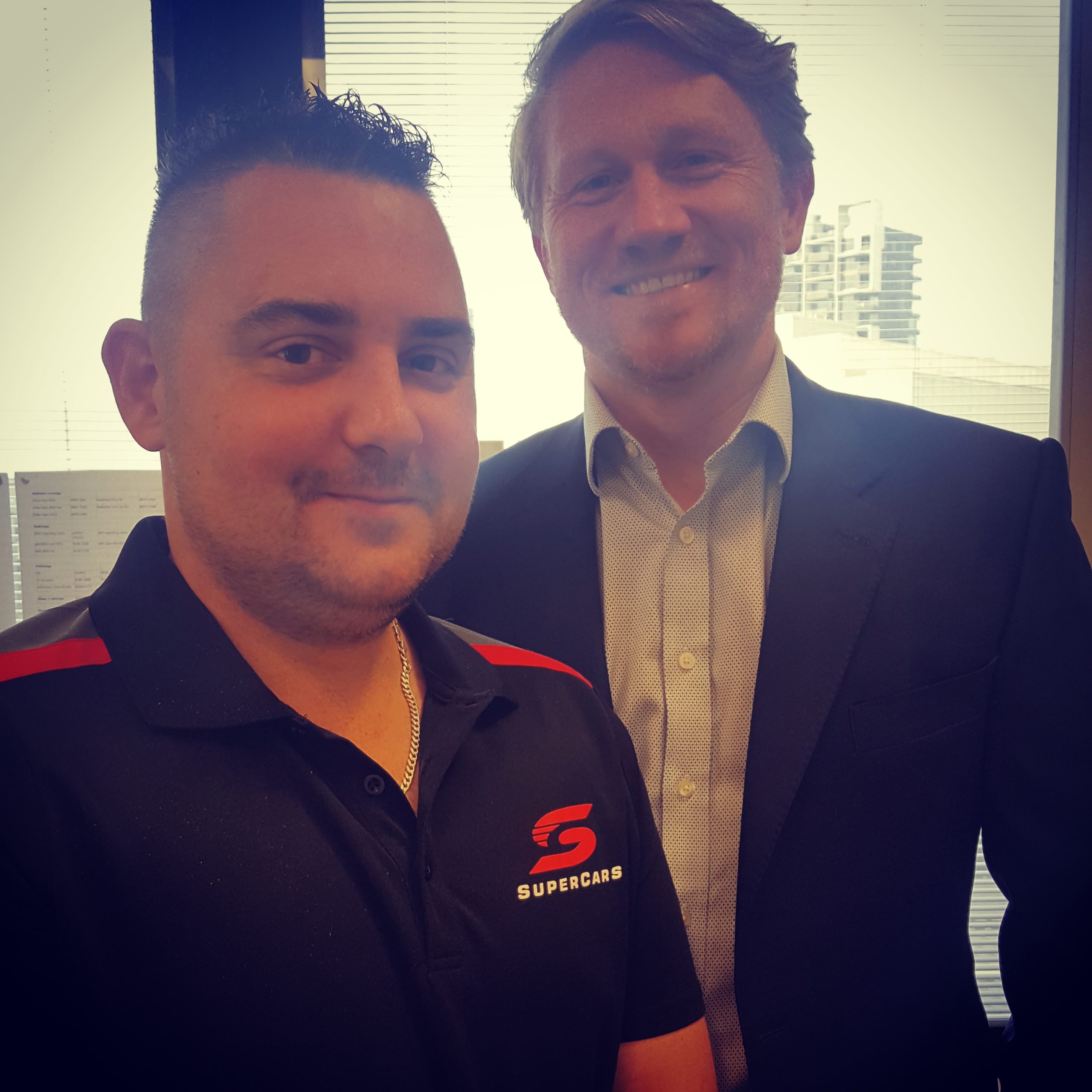
Reflecting on his experience with amyloidosis, Keith said, “it is hard to talk about. It’s quite scary what we went through and the fear of it coming back is still there, and that will never go away unfortunately”.
“We know it’s there. We know that one day we’ll probably have to deal with it [amyloidosis] again.
“We try to put it out of our minds and just keep on moving and trying to live a normal life,” said Keith, who still has more stem cells “on ice, waiting for me, if I ever need them again”.
“We’ve got a whole new perspective on life. We do things differently; we don’t take things for granted now. We take the time to appreciate everything.
“We don’t go out and party hard like we used to, we sit back and relax and look at the world now instead.
“We spend more time with the family, try not to work as many long hours, don’t worry about the small stuff.
“We’re getting married as well.”
“I proposed before I went over to Melbourne for the stem cell transplant,” said Keith, and the wedding is being planned for next year.
Keith, who had to give up racing for three years due to his illness, recently returned to the speed track. Some of his friends took his race car away to re-do it.
“Some of my friends took my car away to re-do it, so I didn’t have to worry about it.
“While I was going through treatment and without me knowing, they got together with my friends, family and sponsors, and built me a brand new top-of-the-class race car,” said Keith.
Unfortunately, it didn’t quite get finished–the business of the people who took on the project, took off and they ran out of time. So when Keith got back from Melbourne, he picked up where they left off.
“I had a brand new car and I took it for its first race, and won!”
He put a myeloma ribbon decal on the bonnet and under the words, “Amyloidosis awareness”, to promote the two diseases.
“I also have myeloma,” said Keith.
“When we went over to Melbourne for the transplant, the Leukaemia Foundation helped out, paying for a bit of accommodation in the hotel while I was there, which was fantastic.
“And we got a heap of information from them, which was really good. They posted that out to us,” said Keith, and in 2019 he took part in the Leukaemia Foundation’s Light the Night event.
When it comes to advice for others with amyloidosis, Keith is adamant: “Don’t read the internet. That’s number one”.
“Although we did Google ‘the best diet for someone with amyloidosis’. The Mediterranean diet was recommended, and we stuck to it – fish twice a week and lots of berries.
“For nine months, I ate a punnet of strawberries every single day.”
Keith wishes he’d had an earlier diagnosis.
“The hardest part was not knowing and not getting answers for such a long time,” he said about those nine months.
“We hope this story helps others by lifting the spirits of those suffering with amyloidosis and myeloma and those caring and supporting them,” said Keith.
“And hope lies with this story, which proves that its ass can be kicked.”
* Wolff-Parkinson-White (WPW) syndrome is a rare congenital heart disorder involving irregularities in the electrical system of the heart. Treatment may involve medication, a procedure known as ablation, or, in rare instances, an electric shock may be used to restore a normal rhythm.
** VCD is a combination of bortezomib (Velcade®), cyclophosphamide and dexamethasone.
*** The Leukaemia Foundation helped out by paying for this accommodation.
Last updated on March 1st, 2021
Developed by the Leukaemia Foundation in consultation with people living with a blood cancer, Leukaemia Foundation support staff, haematology nursing staff and/or Australian clinical haematologists. This content is provided for information purposes only and we urge you to always seek advice from a registered health care professional for diagnosis, treatment and answers to your medical questions, including the suitability of a particular therapy, service, product or treatment in your circumstances. The Leukaemia Foundation shall not bear any liability for any person relying on the materials contained on this website.